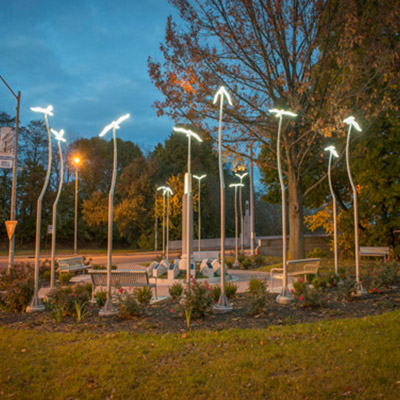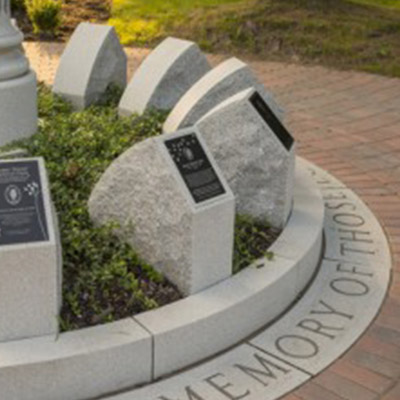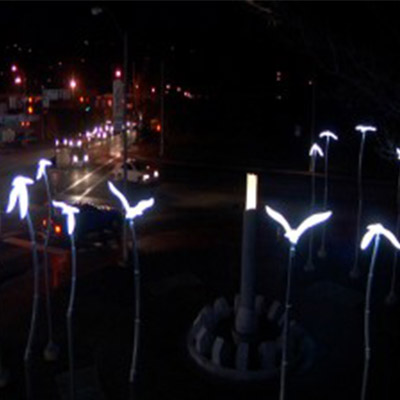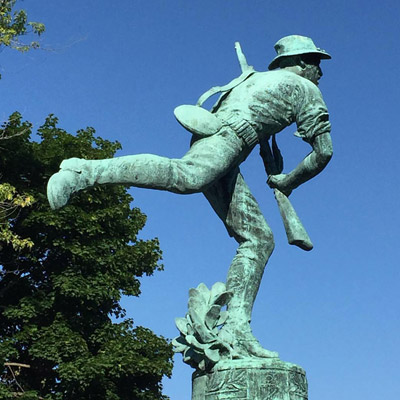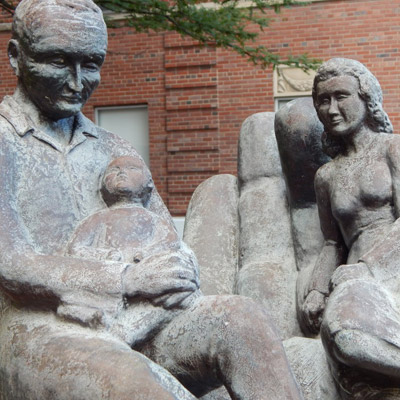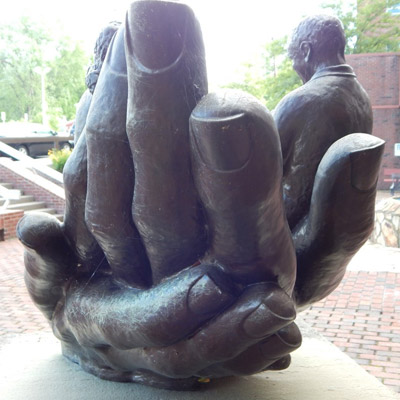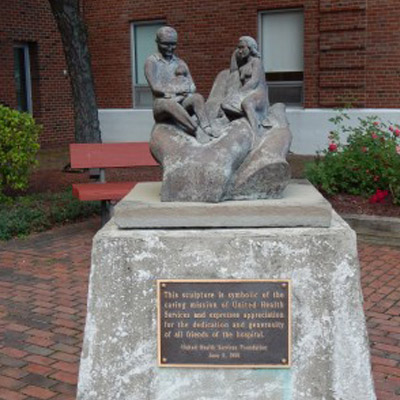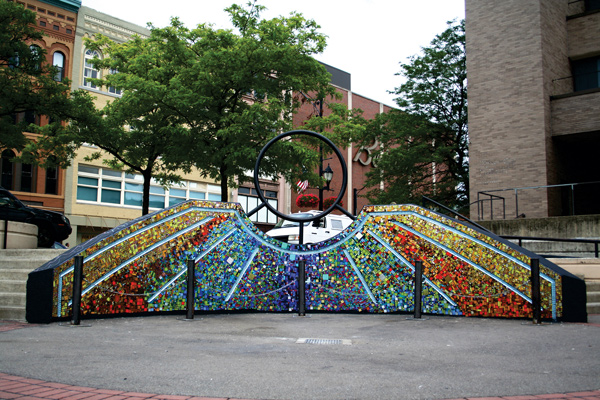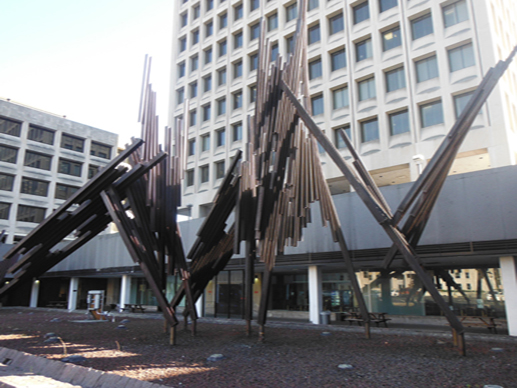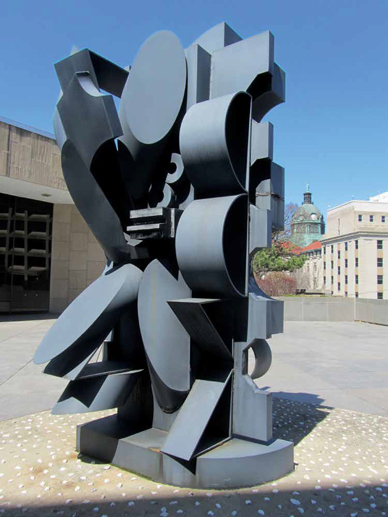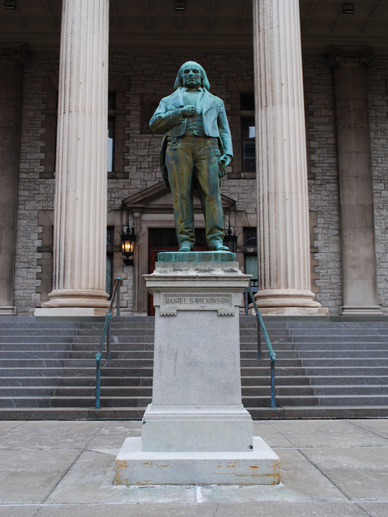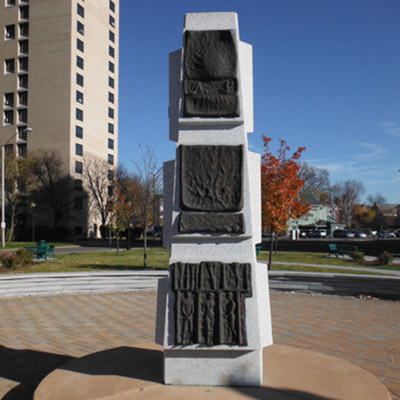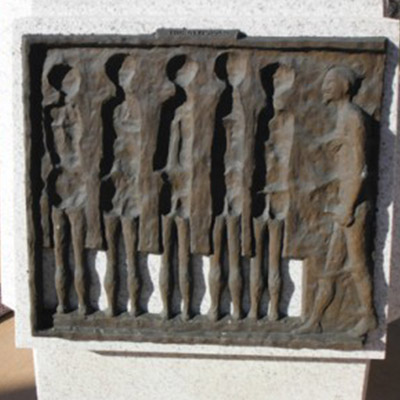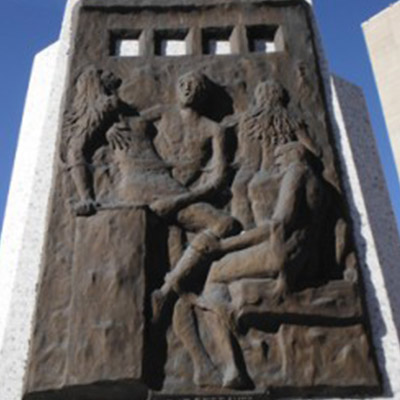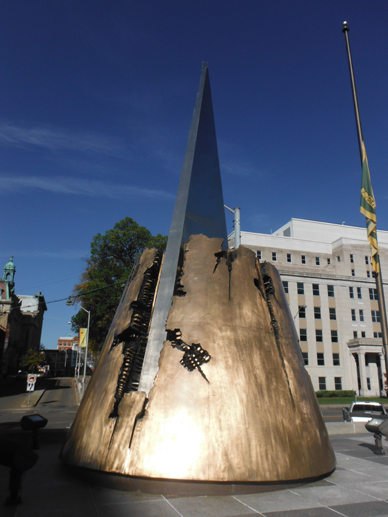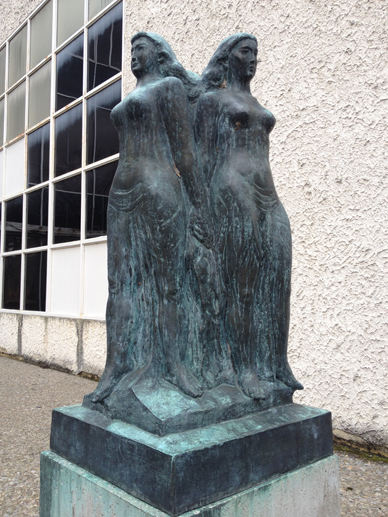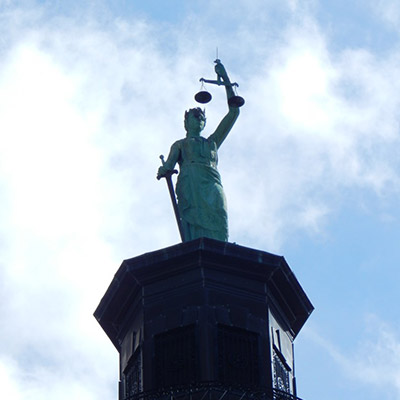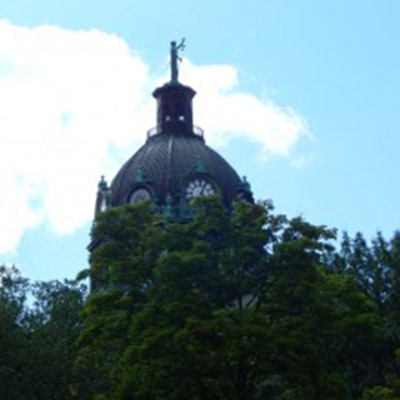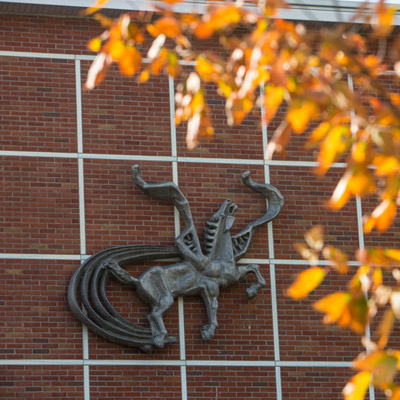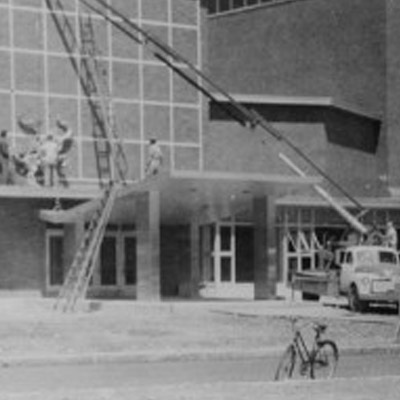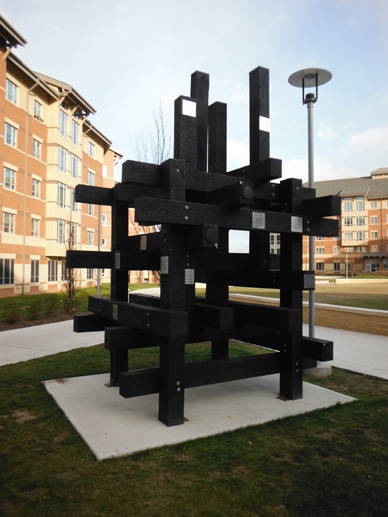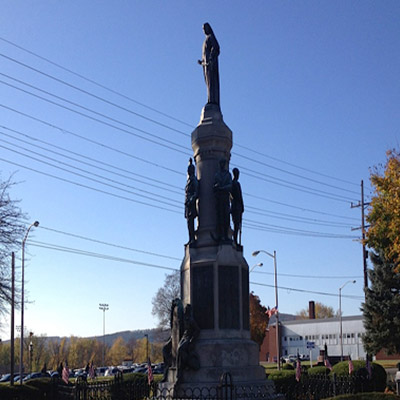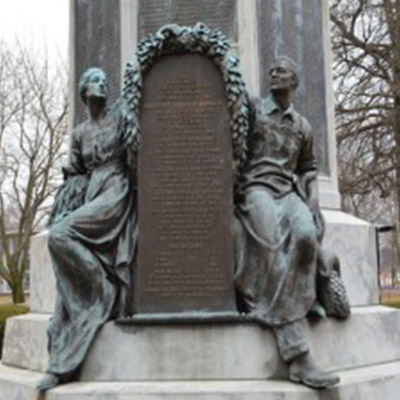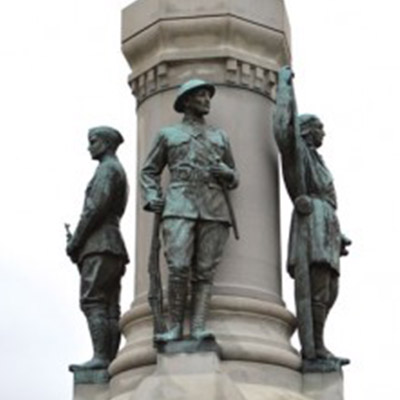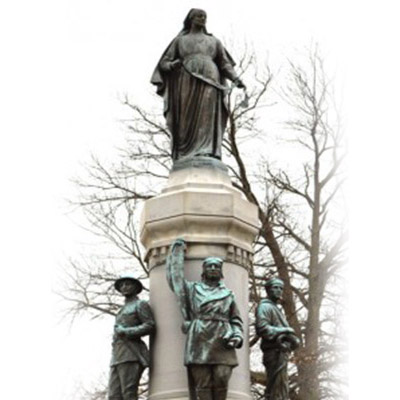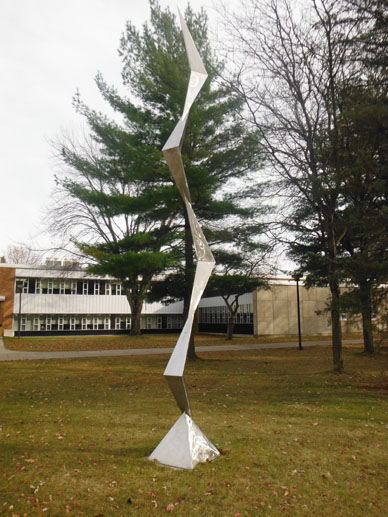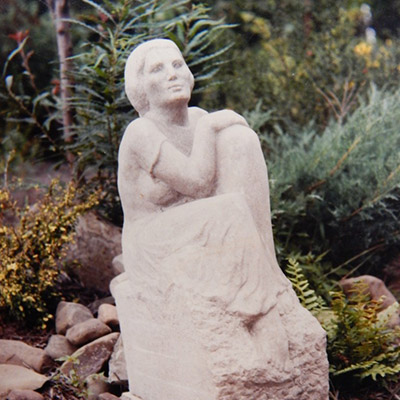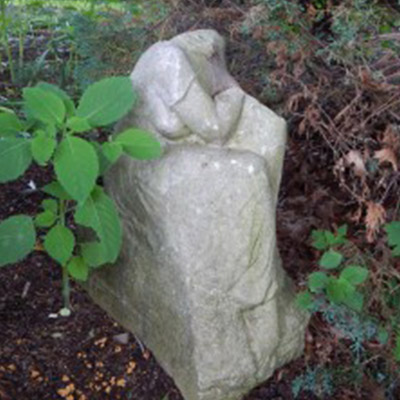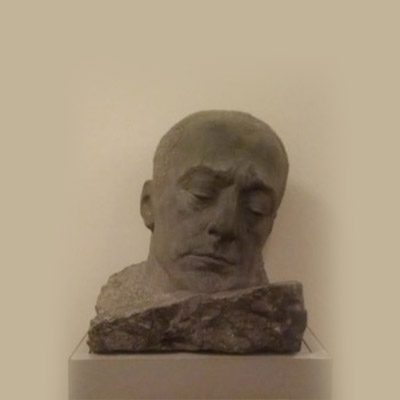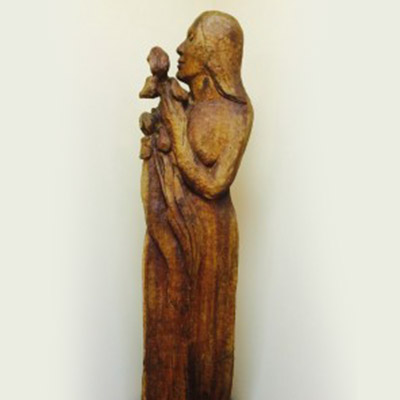Commentary by Chris Bahr
It is hard to know where to begin when you are seeing an exhibition as comprehensive as “50 Years/50 Highlights,” the Binghamton University Art Museum’s 50th anniversary exhibition. The exhibit, which opened earlier this fall, is a very-well-done curatorial as well as being reminiscent of the art history survey class I took years ago. My recent visit was like walking through the pages of Janson’s History of Art book, annotated.
 So, I did what I usually do, the opposite of what is expected! I started at the end of the exhibition instead of at the beginning. That takes the edge off … just jumping in. Colorful copier paper was clipped to a chicken wire fence-type construction (where the museum goer is supposed to exit). That drew my attention first. The sheer audacity of the colors, graphics and display seemed the exact opposite of what I was expecting to see in an exhibition like this. Next, the box construction usually that holds this riot of colorful pages was in a vitrine with more pages. The piece, a commentary on the border between Mexico and the United States, is a recent acquisition by The Border Art Workshop: “The Broken Line #3” (1988).
So, I did what I usually do, the opposite of what is expected! I started at the end of the exhibition instead of at the beginning. That takes the edge off … just jumping in. Colorful copier paper was clipped to a chicken wire fence-type construction (where the museum goer is supposed to exit). That drew my attention first. The sheer audacity of the colors, graphics and display seemed the exact opposite of what I was expecting to see in an exhibition like this. Next, the box construction usually that holds this riot of colorful pages was in a vitrine with more pages. The piece, a commentary on the border between Mexico and the United States, is a recent acquisition by The Border Art Workshop: “The Broken Line #3” (1988).
I was interested in this piece as it utilizes the book art format to tell its story, through the silkscreened box, art and ideas. Throughout history, the broadside and letterpress have been used to alert people to the artist/philosopher or state religious/social ideas. (Martin Luther during the Protestant Reformation comes to mind in this, the 500th anniversary of the nailing of his statements to a church door.) This piece is also interesting in its use of the equivalent of letterpress today, the Xerox.
Use of the Guadeloupe and Spanish as well as English in the piece makes for a multi-textured experience. The colorful pages reminded me of the Day of the Dead cut-paper flags hung up to make a festive day of remembrance for departed loved ones. This piece works or functions on many levels, and it was simply produced with inexpensive materials, which provokes many associations and ideas. Viewers brings their experiences to the piece, so what is evoked is up to the beholder.
Diego Rivera and other muralists in Mexico also used art to discuss their points of view. At times, this caused a loss of commission, a destroyed art piece or loss of life. Art can be very powerful in discussing the current state of political/social/ideological climate of our world. It doesn’t have cost a million bucks to make a statement. This piece to me is really successful in that it is portable and can be displayed in a variety of formats to achieve different effects on the viewer.
I suspect the placement of the piece by the exit door was due to the fact that it really didn’t fit in thematically or visually with the rest of the exhibition. This really brought home the point of the piece. A border, right inside a museum door just before you leave an exhibition. A border between the museum and the outside college? between Mexico and the United States? Pretty genius placement, curators!
(Note: The piece was curated by a graduate student in the Department of Art History, Juanita Rodriguez.)
 As I traveled counterclockwise through the exhibit, a couple of students came in and were squealing with delight. At first I was annoyed, as I was trying to think and take everything in. Then, as I was taking in an exquisite tabernacle of Spanish origin (late 17th century) and was turning to face a giant, painted wood crucifix of Venetian origin, attributed to Nicoletto Semitecolo (14th century), the students approached me and exclaimed “Wow!” This show is amazing!”
As I traveled counterclockwise through the exhibit, a couple of students came in and were squealing with delight. At first I was annoyed, as I was trying to think and take everything in. Then, as I was taking in an exquisite tabernacle of Spanish origin (late 17th century) and was turning to face a giant, painted wood crucifix of Venetian origin, attributed to Nicoletto Semitecolo (14th century), the students approached me and exclaimed “Wow!” This show is amazing!”
I thought they were pulling my leg, but then, I realized that they really were excited to be there. The young James Franco type and his friend had wanted to visit museum for a long time but said, “Gee, every time we walk by, it’s never open!” So I told them that the hours were listed on the door and that it was open late that night (until 7 p.m.). Again, excitement and glee!

Detail of tabernacle
I began contemplating my own psychological and artistic borders and learned that they are always permeable and not made of stone. A glimmer of light from a moment in a museum with some kids, a crucifix, a tabernacle and so much more.
I invite the community to go and see this exhibition and enjoy the randomness that always happens when people meet in such a sacred, hallowed and inspiring place. This museum is such a gem in our area with a collection of more than 3,500 artworks. It is a place for contemplation as well as interaction. I focused on a couple of pieces and a couple of people, but there is much more to see and experience.
The exhibition runs through Dec. 16 as does another special exhibit, “Making Wood Engravings with Lynd Ward,” which highlights the work of an American engraver. The Binghamton University Art Museum, which is free, is located in the Fine Arts Building; visit its website — binghamton.edu/art-museum — for hours and special events. WSKG’s Greg Caitlin will be guiding a tour through this exhibition on Dec. 6; visit http://wskg.org/arts/ for details.
Happy Holidays! See art; be moved beyond the borders of your expectations.


